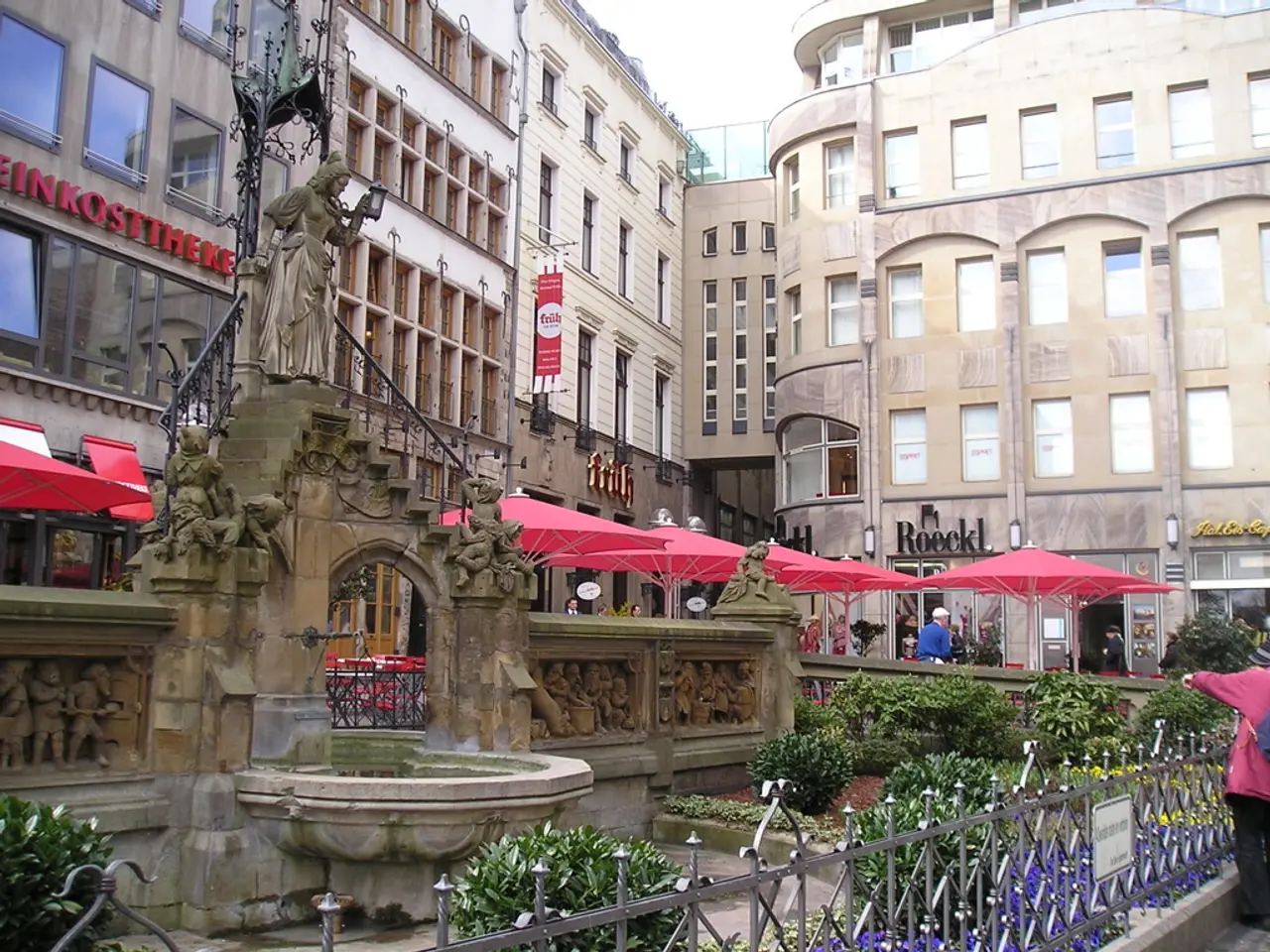Transforming Cityscapes with Permaculture: An Extensive Handbook
Urban permaculture, a design approach that mimics nature, is becoming increasingly important as cities grapple with challenges such as bureaucratic obstacles, limited resources, and community resistance. By addressing these issues, urban permaculture has the potential to make cities better for everyone, promoting sustainability, resilience, and productivity.
The Core Ethics of Urban Permaculture
The three core ethics of permaculture – Earth Care, People Care, and Fair Share – guide urban planners in designing sustainable cities. Earth Care emphasises the importance of trees, diverse crops, water care, and soil health. People Care focuses on community engagement, education, and empowerment, while Fair Share promotes the equitable distribution of resources and the reduction of waste.
Key Approaches to Urban Permaculture Planning
Modern urban permaculture planning integrates multiple synergistic ecological and social elements to create sustainable, resilient, and productive urban ecosystems. Key approaches include:
- Urban forestry and greening: Managing and expanding urban tree populations and green corridors to provide shade, improve air quality, reduce heat island effects, enhance stormwater management, and support biodiversity.
- Agroforestry and edible landscapes: Incorporating trees (fruit, nut, timber) alongside vegetable or herb gardens to foster synergies in food production, ecosystem resilience, and urban aesthetics.
- Diverse urban farming methods: Utilising rooftop farms, vertical gardens, community gardens, hydroponics, aquaponics, and edible green spaces to maximise food production in limited urban spaces.
- Water-wise design and management: Catching, storing, and recycling water through rain gardens, swales, rainwater harvesting, and natural swimming pools to optimise the water cycle and reduce runoff or flooding.
- Successional planting and soil health: Applying principles like keyline design for water management, planting diverse cover crops, and fostering fungal:bacterial balance in soil to encourage natural succession and long-term soil fertility.
- Rewilding and flexibility: Allowing spaces for natural processes, native species, and evolutionary changes over time, so the urban permaculture environment adapts and thrives with minimal input.
- Community engagement and education: Promoting community gardens, shared green spaces, and food literacy programs to build social ties and create accessible fresh food sources.
The Benefits of Urban Permaculture
Urban permaculture offers numerous benefits, from creating urban microclimates that make cities more livable, green, and diverse, to reducing carbon emissions and improving air quality. For instance, Melbourne has seen a significant drop in carbon emissions due to its urban permaculture efforts.
Moreover, integrating native plants in urban landscaping can boost biodiversity, improve air quality, cut down on stormwater runoff, and make cities more eco-friendly. Urban agriculture, including vertical farming solutions, roof gardens, and green roofs, brings fresh food, cleaner air, and cools down cities.
Successful Urban Permaculture Projects
New York City urban gardens, Seattle's permaculture initiatives, and San Francisco urban agriculture are examples of successful urban permaculture projects. These projects demonstrate the potential of urban permaculture to create green, thriving cities and inspire city planners to make their cities greener and stronger.
The Role of Experts and Resources
Experts like Peter Bane, with over 20 years of experience in permaculture, help cities adopt sustainable design and permaculture principles. The Permaculture Handbook is a valuable resource for urban planners and permaculture enthusiasts, providing practical guidance on implementing urban permaculture projects.
Policy and Urban Permaculture
Policy plays a crucial role in promoting urban permaculture. Blending permaculture into zoning laws and pushing for urban farming policies can make cities greener and more eco-friendly. Reducing chemical usage in gardening to zero is a key principle of permaculture urban planning.
In conclusion, urban permaculture is a design approach for cities that promotes sustainability, regeneration, and a greener, more eco-friendly future. As more than half of the world's population now lives in cities, eco-friendly city planning and urban sustainability have never been more urgent.
- Urban permaculture, based on Earth Care, People Care, and Fair Share, encourages sustainable urban planning by emphasizing the importance of soil health, diverse crops, water care, and trees.
- Key urban permaculture planning strategies include urban forestry, agroforestry, diverse farming methods, water-wise design, successional planting, rewilding, and community engagement.
- Cities such as Melbourne and New York have seen significant benefits from implementing urban permaculture, with improved air quality, increased biodiversity, and reduced carbon emissions.
- Integrating native plants, rainwater management, and edible landscapes in urban planning can make cities more livable, green, and sustainable.
- Expert guidance, such as from Peter Bane, and resources like The Permaculture Handbook, are vital for successful urban permaculture projects and sustainable city design.
- Policy can support urban permaculture by blending it into zoning laws and urban farming policies, promoting chemical-free gardening, and encouraging eco-friendly city planning.
- As more people move to cities, it's crucial to prioritize urban sustainability, leveraging technology, environmental-science, and lifestyle choices to create livable, regenerative, and biodiverse urban environments.




